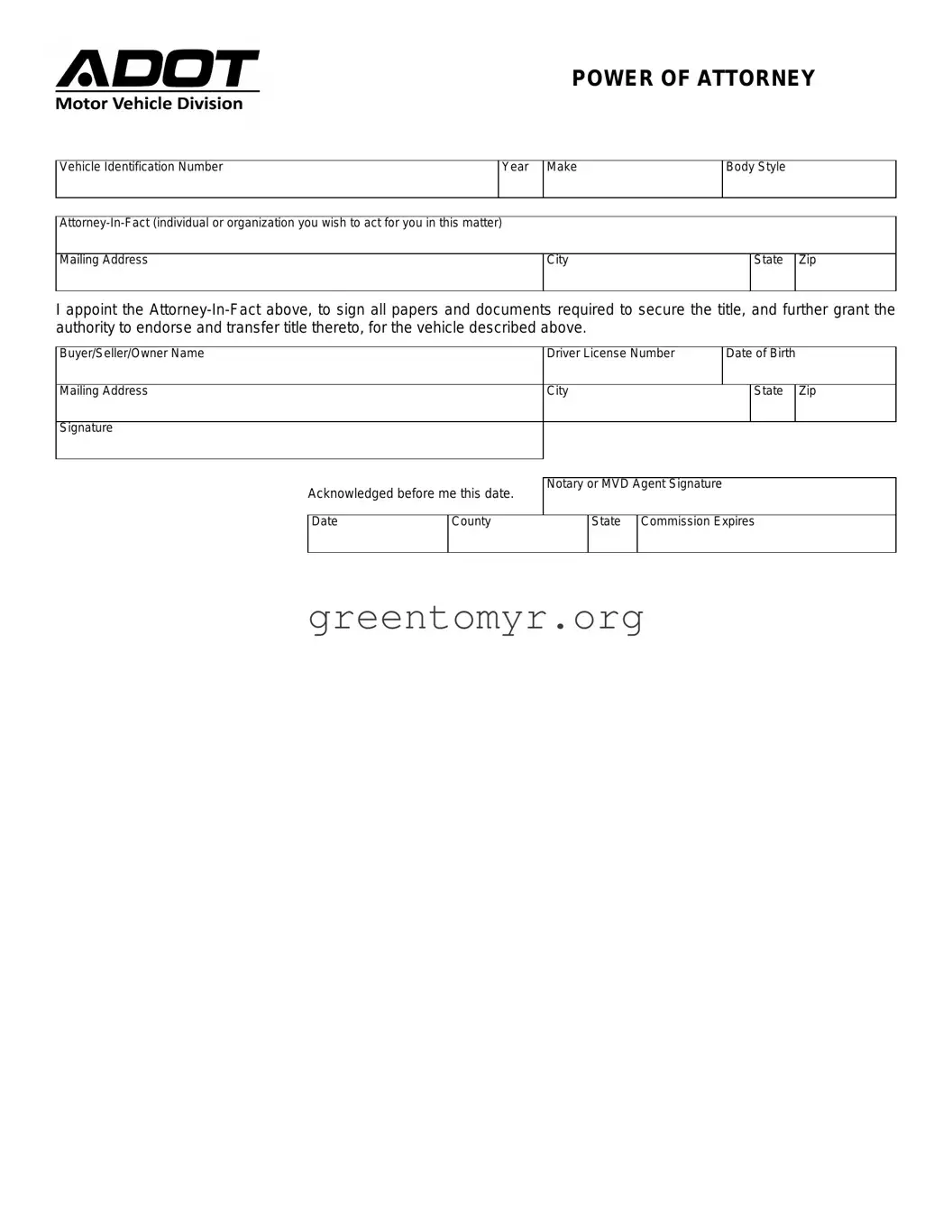The Vehicle Power of Attorney (POA) adot form allows you to grant someone else the authority to act on your behalf regarding vehicle-related matters. This includes tasks like title transfers, registrations, and other administrative tasks with the Department of Motor Vehicles (DMV). It is essential for those who cannot be present in person to handle these transactions.
Who can be designated as my agent in the Vehicle POA?
You can designate anyone you trust as your agent. This can be a family member, friend, or professional service provider. The key is that the person is reliable and understands your wishes regarding your vehicle matters.
Yes, most states require that the Vehicle POA adot form be notarized to be valid. This adds a layer of security and verification to the document, ensuring that the approval comes from you and is legitimate.
How long is the Vehicle POA valid?
The duration of validity varies by state and the conditions set forth in the form itself. Generally, this form remains effective until you revoke it, unless specified otherwise. Always check local laws for specific rules.
Can I revoke a Vehicle POA once it has been signed?
Absolutely. You can revoke a Vehicle POA at any time. To do so, you must inform your agent in writing and may need to notify the DMV or any other relevant parties. Revoking ensures that your previous agent no longer has authority over your vehicle transactions.
Do both the principal and agent need to be present at the DMV?
Typically, only the agent needs to be present at the DMV when utilizing the Vehicle POA. The agent will bring the signed form along. However, it's wise to verify with your local DMV office, as policies may vary.
In the event of loss or damage, you should create a new Vehicle POA form and have it notarized again. Notify your agent and any institutions like the DMV if needed to ensure they are aware of the change.
Is a Vehicle POA necessary for leasing or selling my vehicle?
Yes, a Vehicle POA is often required for leasing or selling your vehicle, especially if you cannot be present. It allows your agent to complete the necessary paperwork and transactions on your behalf, making the process smoother.

